 I found her sitting outside alone when I went back out to douse the campfire. Her heart language is Chinese, but here in my back yard she was using her phone to find words in English to capture what she was feeling. She showed me the little screen and a collection of words she thought perfect. Then we both were thrilled. She had just discovered one of my very favorite poems on her own. Here is Yeats’ “When You Are Old”
I found her sitting outside alone when I went back out to douse the campfire. Her heart language is Chinese, but here in my back yard she was using her phone to find words in English to capture what she was feeling. She showed me the little screen and a collection of words she thought perfect. Then we both were thrilled. She had just discovered one of my very favorite poems on her own. Here is Yeats’ “When You Are Old”
“When you are old and grey and full of sleep,
And nodding by the fire, take down this book
And slowly read, and dream of the soft look
Your eyes had once, and of their shadows deep;
How many loved your moments of glad grace
And loved your beauty with love false or true,
But one man loved the pilgrim soul in you,
And loved the sorrows of your changing face;
And bending down beside the glowing bars,
Murmur a little sadly how love fled
And paced upon the mountains overhead,
And hid his face amid a crowd of stars.”
Sometimes there is immediate communication, if even just a sweetest glimpse, that touches beyond culture and light years, and languages and time. Even if I had her language ability, I am not sure I would have been able to search out words as meaningful. But we both know the same well spring of deepest meaning. We speak out of completely different cultures, but we both have come to love the One who is “riding atop the mountains.”
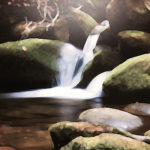
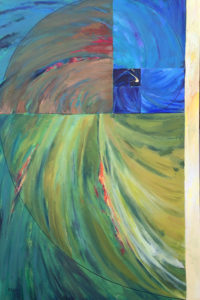 What I am posting today image-wise is a little embarrassing. I did this in 2002. It is a rather large piece: 3’x2′, laid down originally with acrylic. I was ambitiously hoping to put into imagery what I see happening in this collection of Psalms, but critiquing my own attempt, this is brash looking, really uninteresting visually, too direct. For these reasons and others this piece sat hidden behind much else for the last 13 years.
What I am posting today image-wise is a little embarrassing. I did this in 2002. It is a rather large piece: 3’x2′, laid down originally with acrylic. I was ambitiously hoping to put into imagery what I see happening in this collection of Psalms, but critiquing my own attempt, this is brash looking, really uninteresting visually, too direct. For these reasons and others this piece sat hidden behind much else for the last 13 years.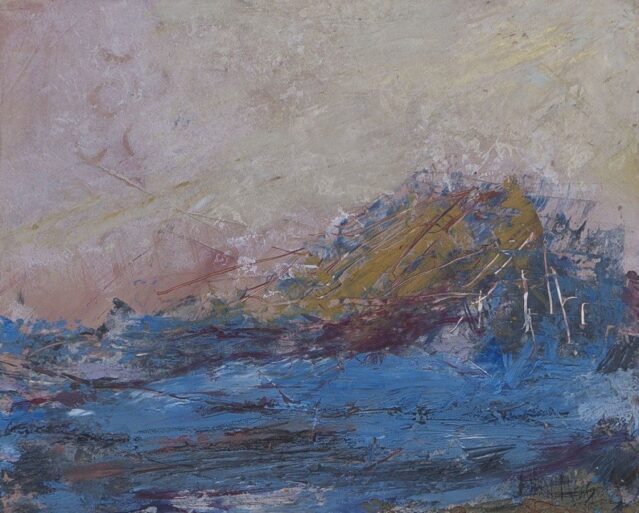
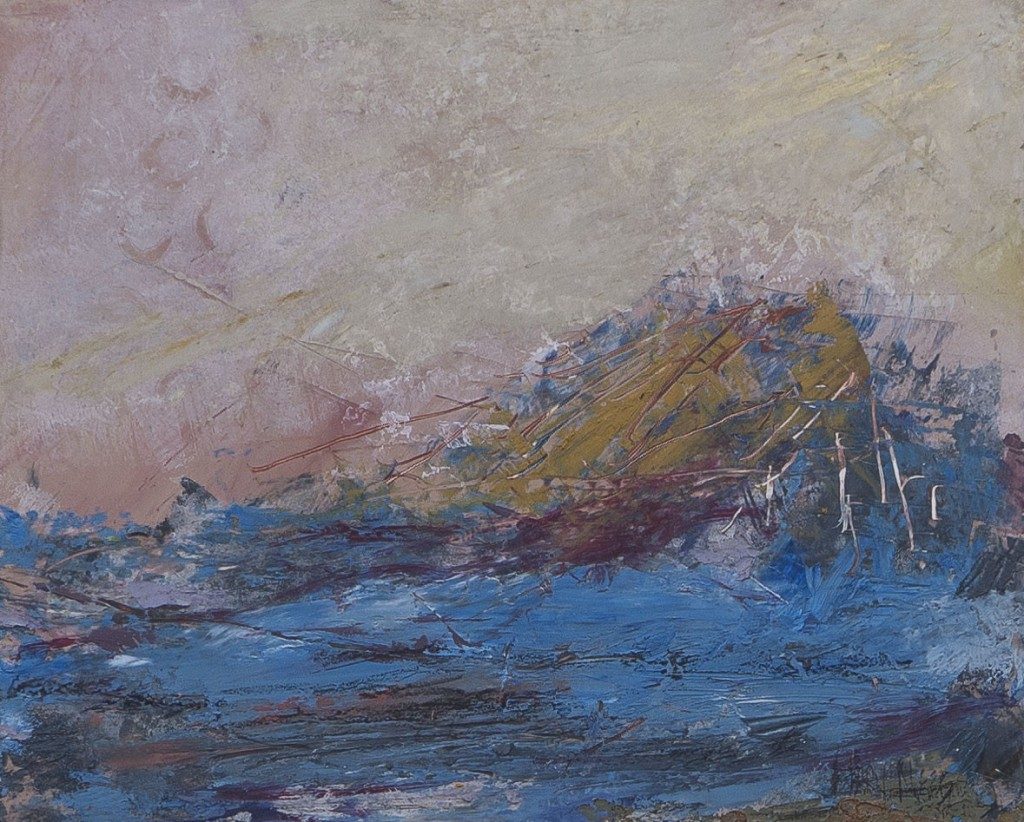
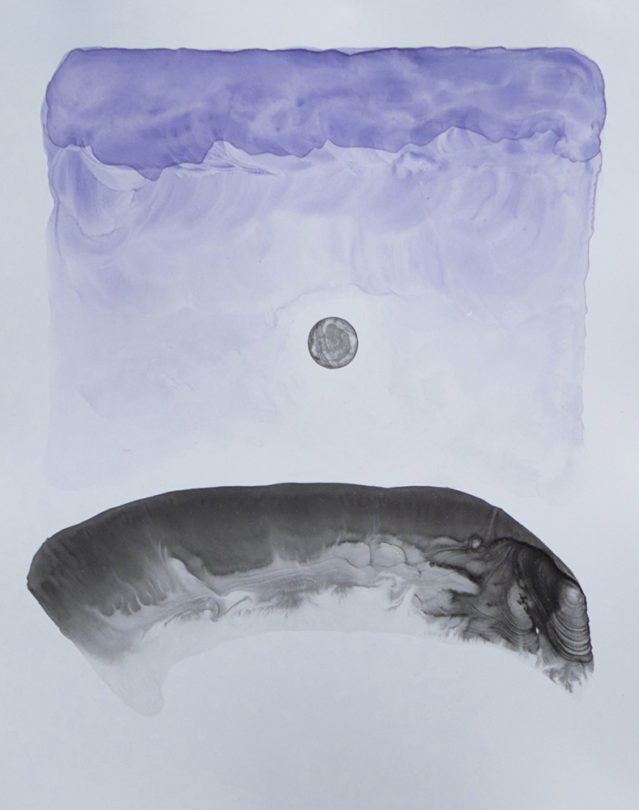
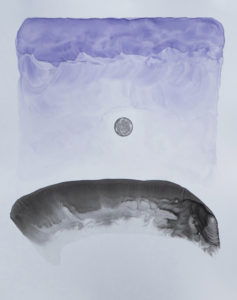
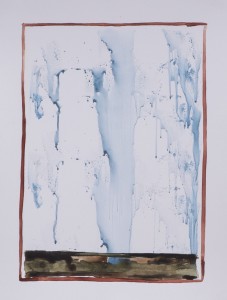 The first image, that of evil, called Abaddon, is dominant and encroaching, seemingly boundless and fearful. The second image is much quieter, gentle but life-giving, boundaried but free. It penetrates the ground rather than taking it over. And it is rimmed by this mysteriously fragile red enclosure. When I made this second image it was after studying some illuminated manuscripts from a book a friend had given me. The first image, as I wrote earlier, took over when I made it, surprised me, troubled me. But it seemed necessary to consider. This second image was planned more carefully, but its making also involved some serendipity. I used a brayer to lay down the veils of blue watercolor, loving the delicate surprise in the markings that resulted, and that were still “in character” with the quiet beauty of good.
The first image, that of evil, called Abaddon, is dominant and encroaching, seemingly boundless and fearful. The second image is much quieter, gentle but life-giving, boundaried but free. It penetrates the ground rather than taking it over. And it is rimmed by this mysteriously fragile red enclosure. When I made this second image it was after studying some illuminated manuscripts from a book a friend had given me. The first image, as I wrote earlier, took over when I made it, surprised me, troubled me. But it seemed necessary to consider. This second image was planned more carefully, but its making also involved some serendipity. I used a brayer to lay down the veils of blue watercolor, loving the delicate surprise in the markings that resulted, and that were still “in character” with the quiet beauty of good.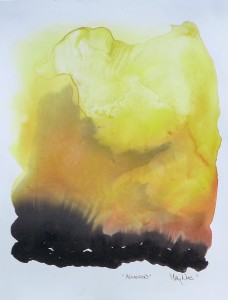 This is an exposure– a hint in a small visual way, of a most difficult concept: the problem of evil. An excellent writer I admire has crafted a brilliant attempt to understand the challenge of real evil. In Unspeakable, Os Guiness says “Modern people have shown a chronic inability to name and judge evil and to respond effectively. . . Evil dwarfs our best discussions and remains a mystery even after our best explanations.”
This is an exposure– a hint in a small visual way, of a most difficult concept: the problem of evil. An excellent writer I admire has crafted a brilliant attempt to understand the challenge of real evil. In Unspeakable, Os Guiness says “Modern people have shown a chronic inability to name and judge evil and to respond effectively. . . Evil dwarfs our best discussions and remains a mystery even after our best explanations.”